
June 9, 2025 Nature Energy
Fluorinated isopropanol for improved defect passivation and reproducibility in perovskite solar cells
Nature Ergy
Here we introduce a passivation strategy based on fluorinated isopropanol for full passivation of surface defects with only a thin layer of low-dimensional perovskite, which does not interfere with charge transport. Fluorinated isopropanol reduces the reactivity of passivator molecules with the perovskite and allows the use of high passivator concentrations, ensuring complete defect passivation. A subsequent rinse with a solvent mixture of fluorinated isopropanol and isopropanol removes the excess passivator molecule.
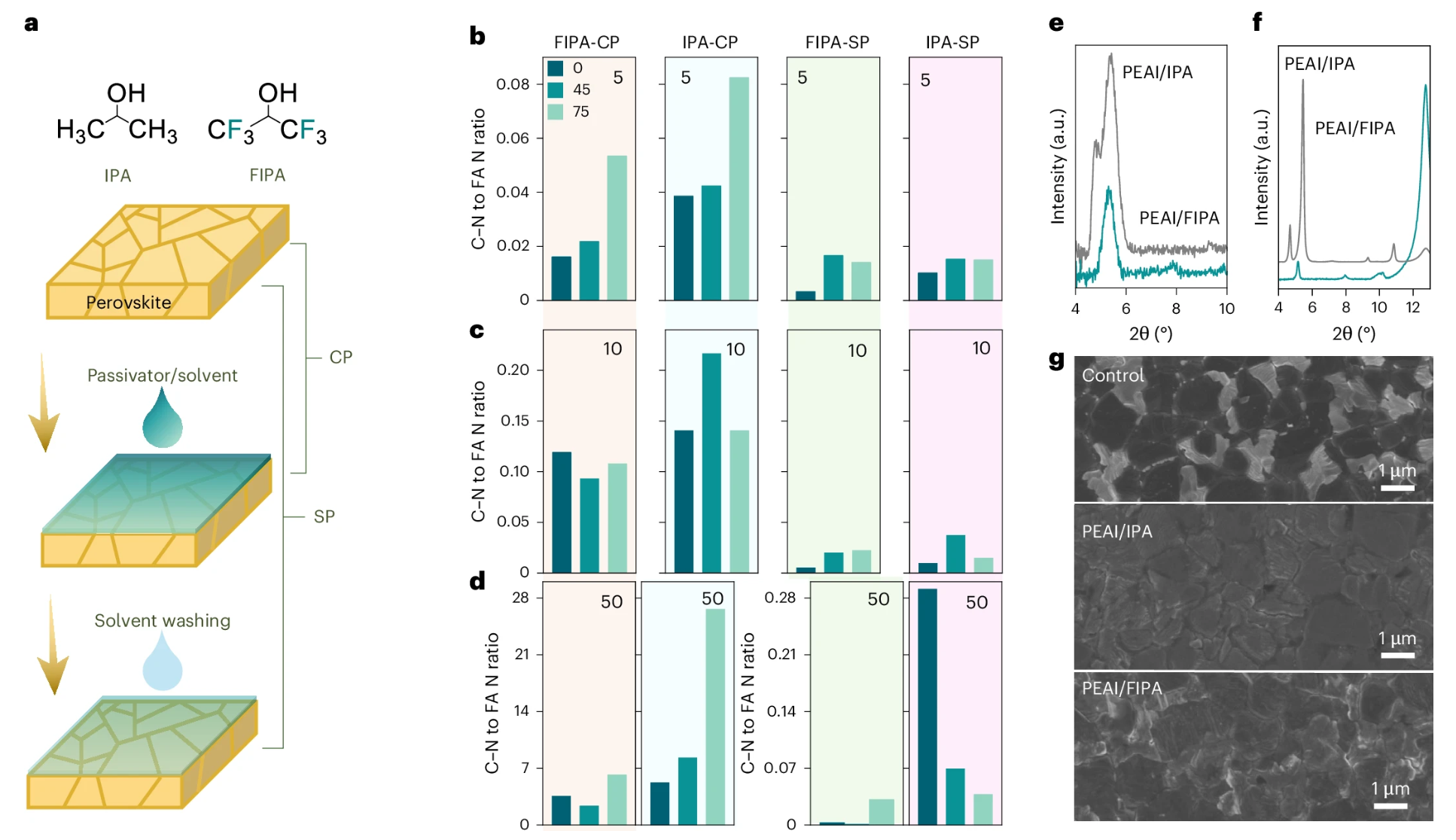
February 6, 2025 Nature Chemistry
Molecular contacts with an orthogonal π-skeleton induce amorphization to enhance perovskite solar cell performance
Here we demonstrate a molecular contact with an orthogonal π-skeleton that shows better resilience to external stimuli than commonly used conjugated cores. This molecular design yields a disordered, amorphous structure that is not only highly stable but also demonstrates exceptional charge selectivity and transport capability. The perovskite solar cells fabricated with this orthogonal π-skeleton molecule exhibited enhanced long-term durability in accelerated-ageing tests. This orthogonal π-skeleton functionality opens new opportunities in molecular design for applications in organic electronics.
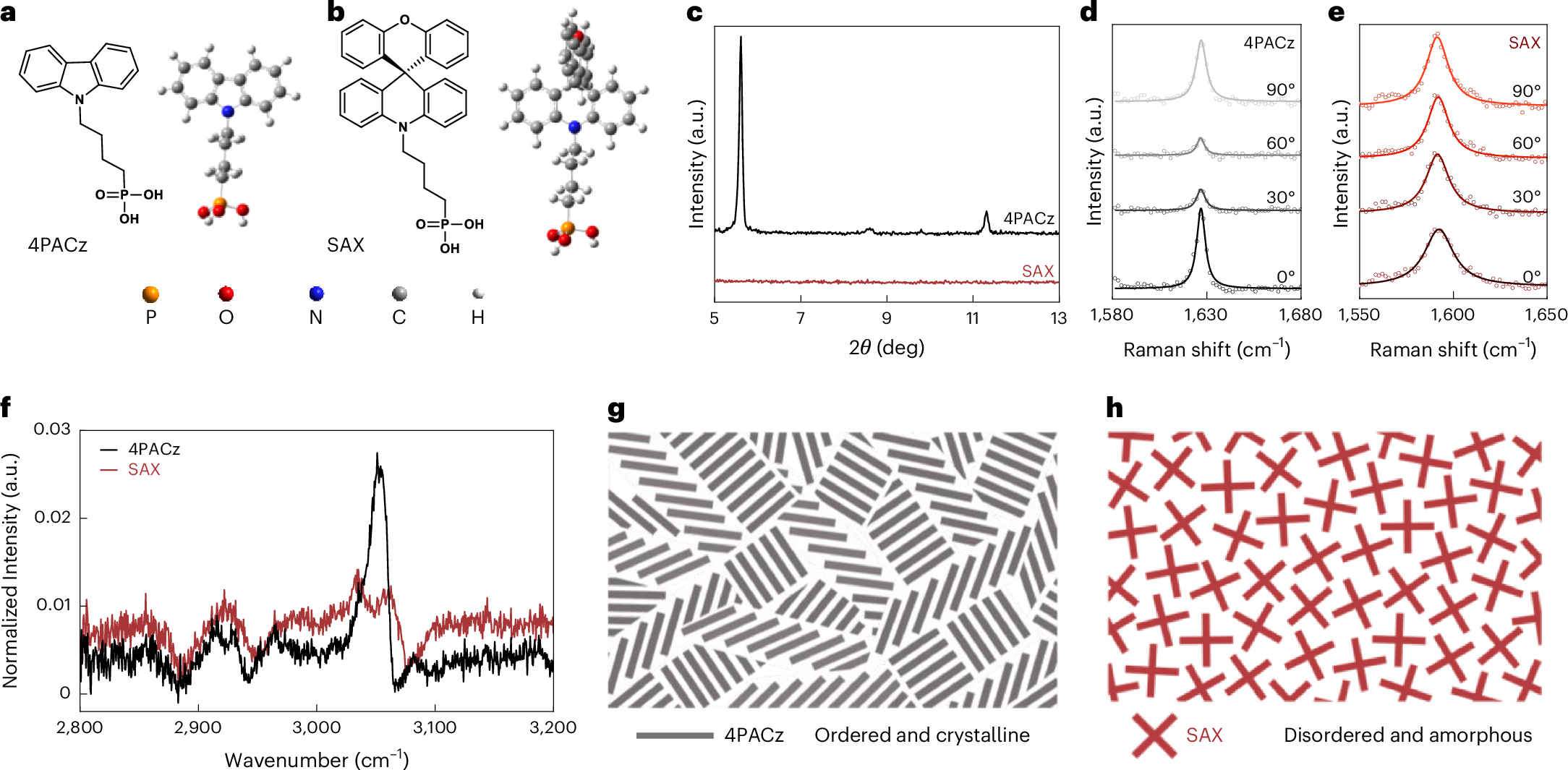
February 3, 2025 Nature Photonics
Divalent cation replacement strategy stabilizes wide-bandgap perovskite for Cu(In,Ga)Se2 tandem solar cells
Nature Photonics 2025, 19, 479
Here we develop a divalent cation replacement strategy that mitigates ionic migration while limiting phase segregation. We demonstrate that the replacement of the A-site cations in the perovskite lattice with methylenediammonium cations (MDA2+) substantially suppresses the above issues in wide-bandgap perovskites. This is mainly due to the bivalent state of MDA2+ generating a strong interaction with the inorganic framework and reducing the mobility of halide ions and the formation of defects. As a result, the stability and efficiency of the fabricated PSCs are substantially improved.
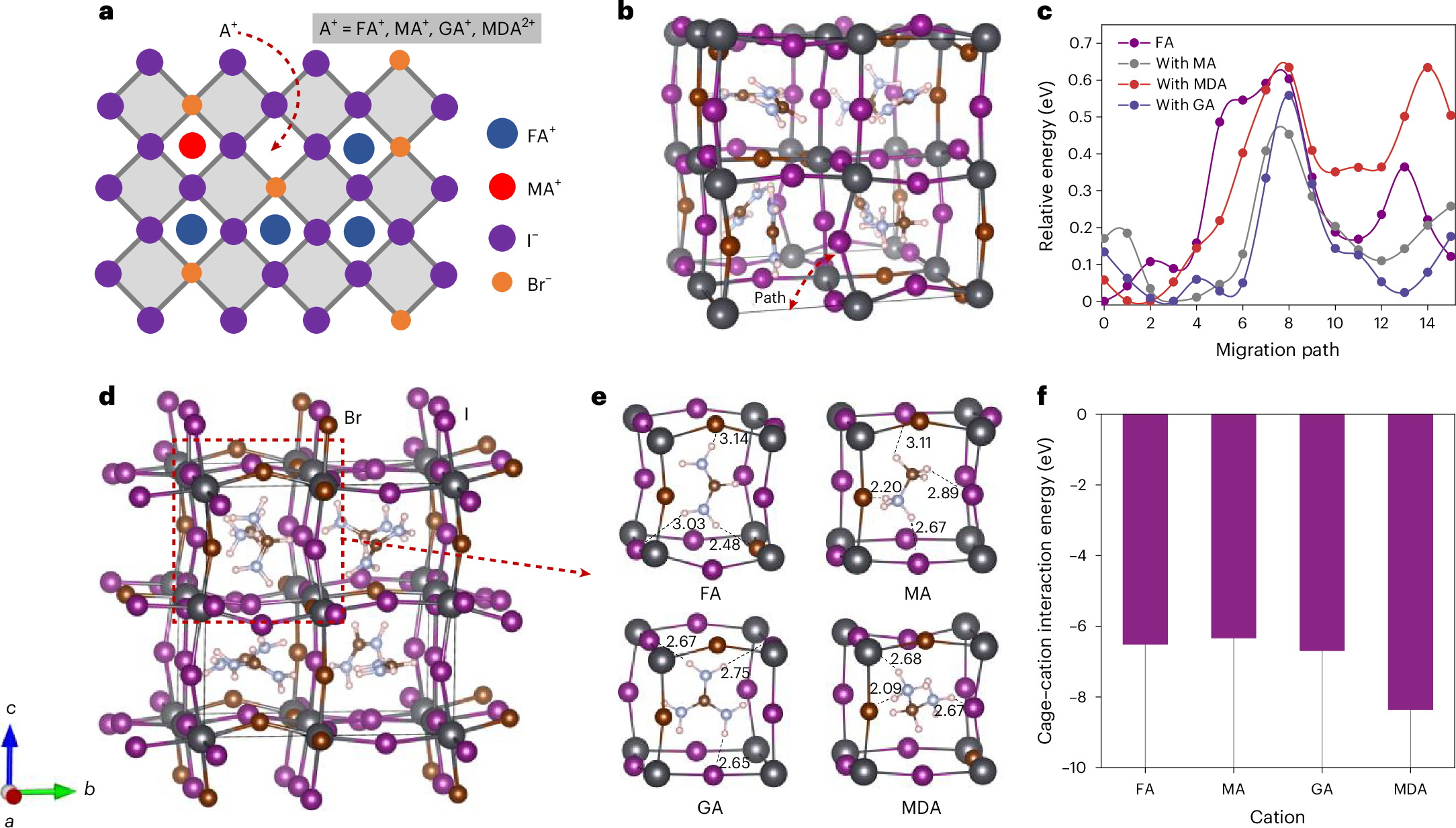
October 31, 2024 Science
Cation reactivity inhibits perovskite degradation in efficient and stable solar modules
We show that incorporating N,N-dimethylmethyleneiminium chloride into the perovskite precursor solution formed dimethylammonium cation and that previously unobserved methyl tetrahydrotriazinium ([MTTZ]+) cation effectively improved perovskite film. The in situ formation of [MTTZ]+ cation increased the formation energy of iodine vacancies and enhanced the migration energy barrier of iodide and cesium ions, which suppressed nonradiative recombination, thermal decomposition, and phase segregation processes. The optimized PSMs achieved a record (certified) PCE of 23.2% with an aperture area of 27.2 cm2, with a stabilized PCE of 23.0%. The encapsulated PSM retained 87.0% of its initial PCE after ~1900 hours of maximum power point tracking at 85°C and 85% relative humidity under 1.0-sun illumination.
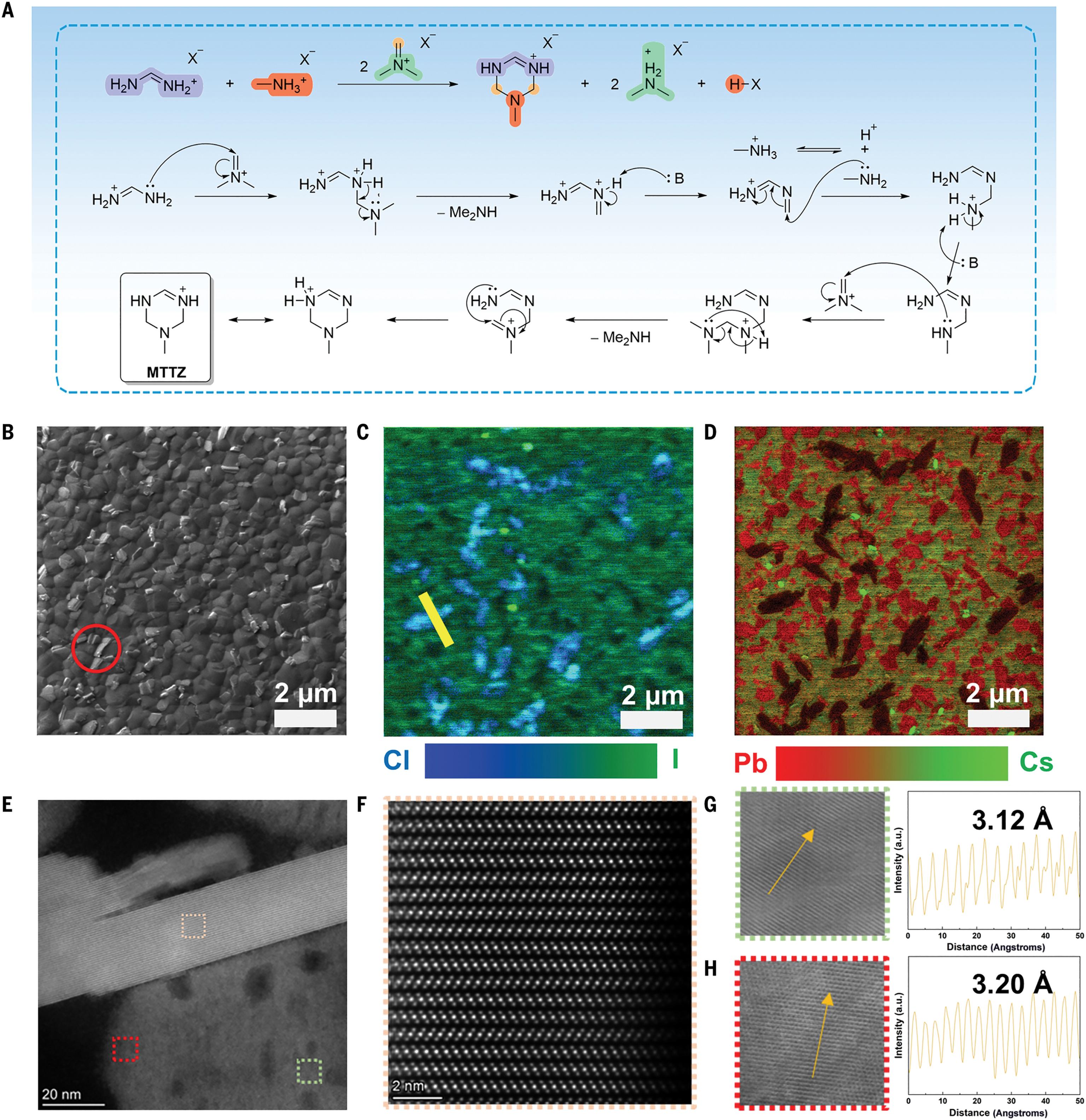
July 24, 2024 Nature
peri-Fused polyaromatic molecular contacts for perovskite solar cells
Molecule-based selective contacts have become a crucial component to ensure high-efficiency inverted perovskite solar cells1,2,3,4,5. These molecules always consist of a conjugated core with heteroatom substitution to render the desirable carrier-transport capability6,7,8,9. So far, the design of successful conjugation cores has been limited to two N-substituted π-conjugated structures, carbazole and triphenylamine, with molecular optimization evolving around their derivatives2,5,10,11,12. However, further improvement of the device longevity has been hampered by the concomitant limitations of the molecular stability induced by such heteroatom-substituted structures13,14.
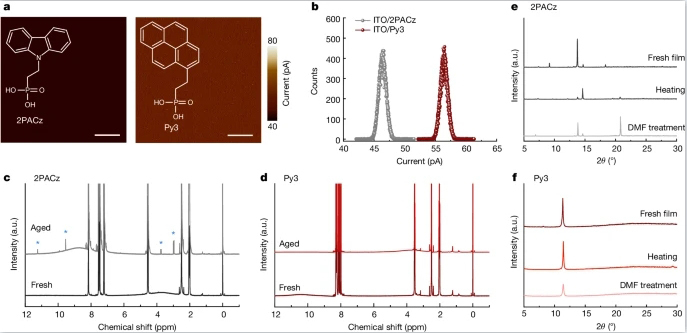
July 1, 2024 Nature Photonics
High-entropy hybrid perovskites with disordered organic moieties for perovskite solar cells
Here we report a family of high-entropy organic–inorganic hybrid perovskites for photovoltaic applications. By mixing different A-site organic cations with various alkyl chains, we obtain a hybrid crystal structure with ordered inorganic frameworks and disordered organic moieties, leading to increased entropy. The hybrid perovskite exhibits superior properties compared with its single-component counterpart, including increased resilience to structural transitions and heat stress. When used in solar cells, the high-entropy hybrid perovskite leads to devices with a power conversion efficiency of 25.7% (certified, 25.5%) for an inverted-cell architecture.
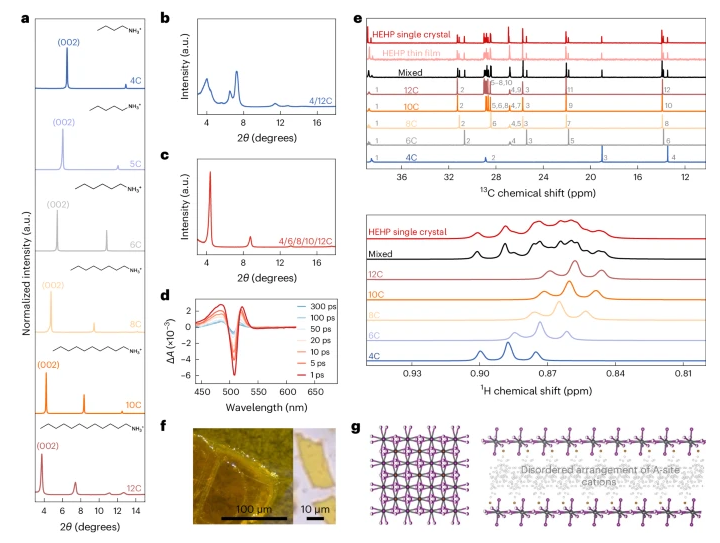
June 21, 2023 Nature
Oriented nucleation in formamidinium perovskite for photovoltaics
The black phase of formamidinium lead iodide (FAPbI3) perovskite shows huge promise as an efficient photovoltaic, but it is not favoured energetically at room temperature, meaning that the undesirable yellow phases are always present alongside it during crystallization1,2,3,4. This problem has made it difficult to formulate the fast crystallization process of perovskite and develop guidelines governing the formation of black-phase FAPbI3 (refs. 5,6). Here we use in situ monitoring of the perovskite crystallization process to report an oriented nucleation mechanism that can help to avoid the presence of undesirable phases and improve the performance of photovoltaic devices in different film-processing scenarios. The resulting device has a demonstrated power-conversion efficiency of 25.4% (certified 25.0%) and the module, which has an area of 27.83 cm2, has achieved an impressive certified aperture efficiency of 21.4%.
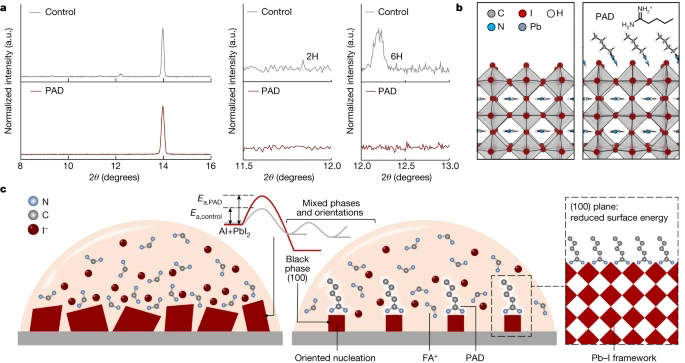
March 15, 2022 Nature
Stability-limiting heterointerfaces of perovskite photovoltaics
Optoelectronic devices consist of heterointerfaces formed between dissimilar semiconducting materials. The relative energy-level alignment between contacting semiconductors determinately affects the heterointerface charge injection and extraction dynamics. For perovskite solar cells (PSCs), the heterointerface between the top perovskite surface and a charge-transporting material is often treated for defect passivation1,2,3,4 to improve the PSC stability and performance. However, such surface treatments can also affect the heterointerface energetics1. Here we show that surface treatments may induce a negative work function shift (that is, more n-type), which activates halide migration to aggravate PSC instability. Therefore, despite the beneficial effects of surface passivation, this detrimental side effect limits the maximum stability improvement attainable for PSCs treated in this way.
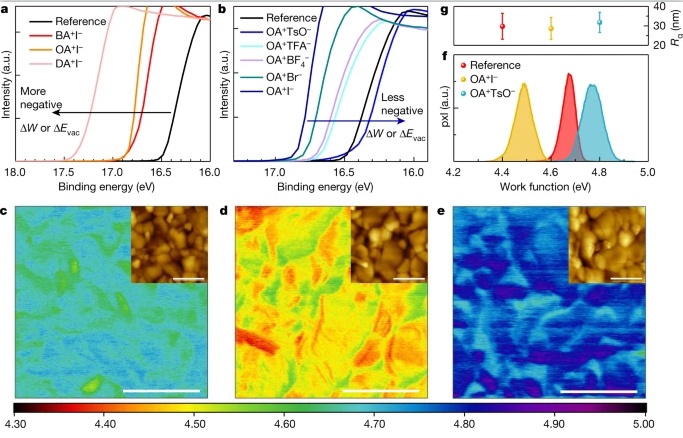
February 5, 2021 Science
Reconfiguring the band-edge states of photovoltaic perovskites by conjugated organic cations
The band edge of hybrid organic-inorganic perovskites, which have the general formula ABX3, is mainly controlled by the inorganic X anions (such as chloride) and the B cation (such as lead). Organic A-site cations usually only exert indirect structural effects because their electronic levels lie far from the band edge. Xue et al. show that cations with large π-conjugated structures can interact with inorganic frontier molecular orbitals. A surface layer of ethylammonium pyrene, which had an optimal intercalation distance, increased hole mobilities and power conversion efficiencies relative to a reference inorganic perovskite and also improved device stability.
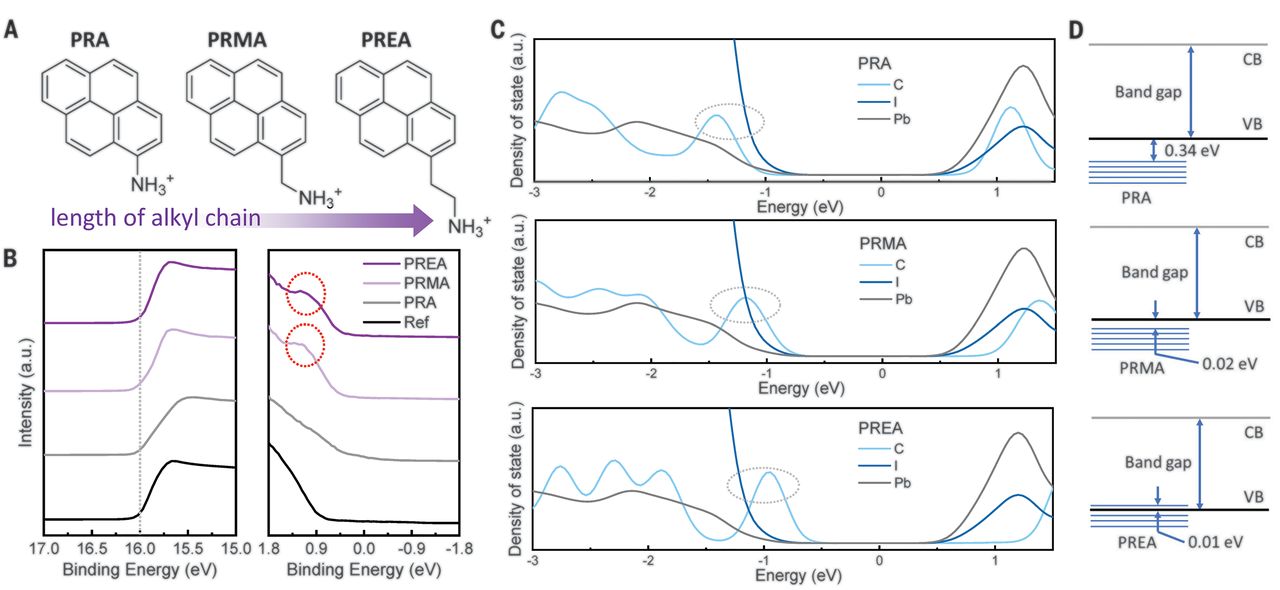
December 20, 2019 Science
Constructive molecular configurations for surface-defect passivation of perovskite photovoltaics
Unproductive charge recombination at surface defects can limit the efficiency of hybrid perovskite solar cells, but these defects can be passivated by the binding of small molecules. Wang et al. studied three such small molecules—theophylline, caffeine, and theobromine—that bear both carbonyl and amino groups. For theophylline, hydrogen bonding of the amino hydrogen to surface iodide optimized the carbonyl interaction with a lead antisite defect and improved the efficiency of a perovskite cell from 21 to 22.6%.
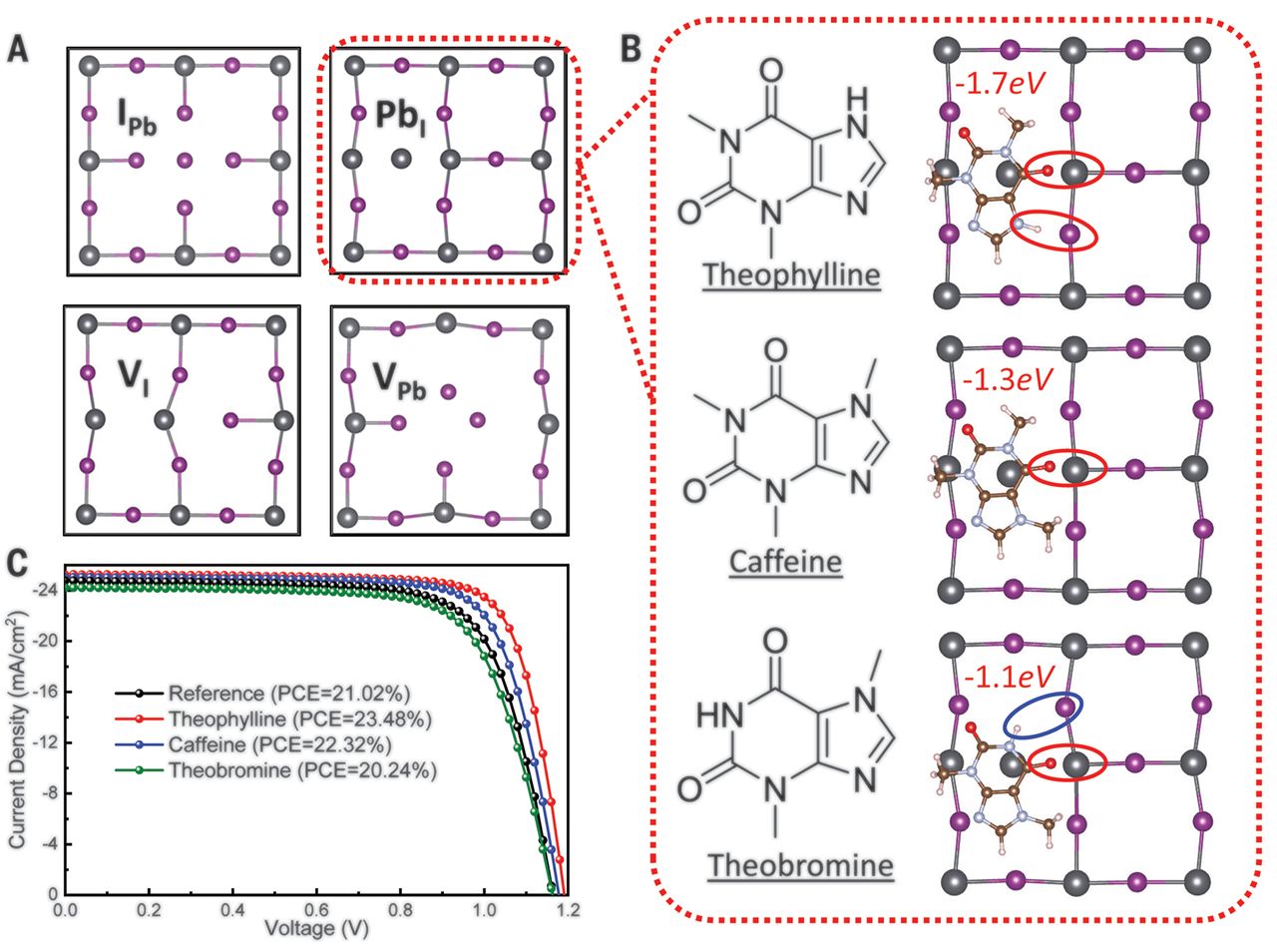

Address: No. 600 Dunyu Road Sandun Town, Xihu District 310030 Hangzhou, Zhejiang PR China
Email: wangrui@westlake.edu.cn
We are regularly seeking highly motivated postdocs, research assistant, Ph.D. students or visiting students for our lab! If you are interested in our research, do not hesitate to send your CV to wangrui@westlake.edu.cn
Join Us